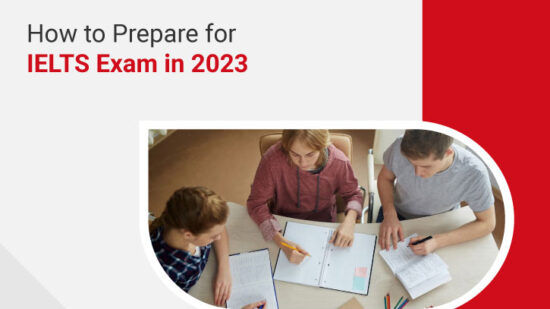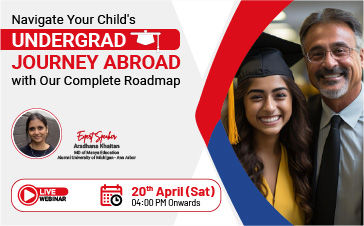The International English Language Testing System is designed to assess the language ability of candidates who need to study or work where English is the language of communication and instruction. It covers four basic language skills – listening, reading, writing and speaking. IELTS is managed by three reputable, international organizations – British Council, IDP: IELTS Australia and the University of Cambridge ESOL Examinations (Cambridge ESOL). IELTS is a compulsory exam for admission into universities and training programs in the UK, Australia, New Zealand and Canada. Did you know that it has become a must for those of you who wish to get a student visa to Australia? The tests are administered at centers throughout the world. Internationally, universities, professional bodies, government agencies and immigration authorities of countries like Australia, Canada, New Zealand, the United Kingdom and Australia recognize the tests.
There are two formats of the test – Academic and General training.
Academic – Institutions of Higher and Further Education
The Academic format is, broadly speaking, for those who want to study or train in an English-speaking university or Institutions of Higher and Further Education. Admission to undergraduate and postgraduate courses is based on the results of the Academic test.
General Training – for school, work or migration
The General Training format focuses on basic survival skills in broad social and workplace contexts. It is typically for those who are going to English-speaking countries to do secondary education, work experience or training programs. People migrating to Australia, Canada and New Zealand must sit the General Training test.
It should be noted that certain professions require an Academic test result for registration and migration purposes.
All candidates take the same Listening and Speaking modules but different Reading and Writing modules.
| Academic Training | General Training |
|---|---|
| Listening: 4 sections, 40 questions, 30 minutes | |
| Reading: 3 sections, 40 questions, 60 minutes | Reading: 3 sections, 40 questions, 60 minutes |
| Writing: 2 tasks, 60 minutes | Writing: 2 tasks, 60 minutes |
| Speaking: 11 to 14 minutes |
Listening:
This is the first section of the IELTS you will have to deal with. Well, the listening part is divided into four sections, each consisting of 10 questions and each with a higher degree of difficulty. The first two sections are concerned with social needs. There is a conversion between two speakers and then a monologue. The final two sections are concerned with situations related to educational or training contexts. There is a conversation between up to four people and then a monologue.
A variety of question types is used, including: multiple choice, short – questions, sentence completion, notes/chart/table completion, labeling a diagram, classification, matching.
The main problem that you have got to deal with is that you will be allowed to listen to the cassette just once. In most cases, you have to write down something you hear (could be a phone number, an address, a name, etc.). At times key words like names and numbers are spelt or repeated, but not always.
In the 30-minutes test, you will have to answer a total number of 40 questions, some of which are multiple-choice. According to us, if you get anything more than 30 answers right, it would means a good score, but at times, you may get good enough marks even with 27 or 28 right answers. Ten minutes are allowed at the end to transfer answers to the answer sheet.
Reading:
The Reading section is different for Academic IELTS and General Training IELTS. However, for both, in the space of 60 minutes, you will be required to answer as many as 40 questions. This, in effect means 20 minutes to each passage.
Academic Training Reading
There are three reading passages, of increasing difficulty, on topics of general interest and candidates have to answer 40 questions. The passages are taken from magazines, journals, books and newspapers. At least one text contains detailed logical argument.
A variety of question types is used, including: multiple choice, short-answer questions, sentence completion, notes/chart/table completion, labeling a diagram, classification, matching lists/phrases, choosing suitable paragraph headings from a list, identification of writer’s views/attitudes – yes, no, not given, or true, false, not given.
General Training Reading
Candidates have to answer 40 questions. There are three sections of increasing difficulty, containing texts taken from notices, advertisements, leaflets, newspapers, instruction manuals, books and magazines. The first section contains texts, relevant to basic linguistic survival in English, with tasks mainly concerned with providing factual information. The second section focuses on the training context and involves texts of more complex language. The third section involves reading more extended texts, with a more complex structure, but with the emphasis on descriptive and instructive rather than argumentative texts.
A variety of question types is used, including: multiple choice, short-answer questions, sentence completion, notes/chart/table completion, labeling a diagram, classification, matching lists / phrases, choosing suitable paragraph headings from a list, identification of writer’s views/attitudes – yes, no, not given, or true, false, not given
Writing:
The IELTS does not test your knowledge of English in as much as it tests your comprehension skills. It is more a test of your time management skills and your ability to comprehend in a short time frame. Well, in effect you have to complete two writing tasks in just one hour. The Writing section is different for Academic IELTS and General Training IELTS.
Academic Training Writing
There are two tasks and it is suggested that candidates spend about 20 minutes on Task 1, which requires them to write at least 150 words for 40 minutes on Task 2 – 250 words. The assessment of Task 2 carries more weight in marking than Task 1.
In Task 1 candidates are asked to look at a diagram or table and to present the information in their own words. They are assessed on their ability to organize, present and possibly compare data, describe the stages of a process, describe an object or event, explain how something works.
In Task 2 candidates are presented with a point of view, argument or problem. They are assessed on their ability to present a solution to the problem, present and justify an opinion, compare and contrast evidence and opinions, evaluate and challenge ideas, evidence or arguments.
General Training Writing
There are two tasks and it is suggested that candidates spend about 20 minutes on Task 1, which requires them to write at least 150 words, and 40 minutes on Task 2 – 250 words. The assessment of Task 2 carries more weight in marking than Task 1
In Task 1 candidates are asked to respond to give problem with a letter requesting information or explaining a situation. They are assessed on their ability to engage in personal correspondence, elicit and provide general factual information, express needs, wants, likes and dislikes, express opinions, complaints, etc
In Task 2 candidates are presented with a point of view, argument or problem. They are assessed on their ability to provide general factual information, outline a problem and present a solution, prevent and justify an opinion, evaluate and challenge ideas, evidence or arguments.
Speaking:
In this 14-minute section, is usually a conversation about you, your life, your aspirations, your studies and your town. You should be ready to talk on these subjects.
In addition, the examiner will show you a card with an argument and you will have to that. Use simple words and expressions. This is to test your ability to communicate what you think. Your accent, pronunciation, etc are not all that important. What is more important is your understanding of what the examiner says and your ability to communicate clearly and effectively. The conversation usually lasts 15-20 minutes and will be recorded.
IELTS SCORING:
There is no pass or fail in IELTS. Candidates are graded on their performance in the test, using scores from 1 to 9 for each part of the test – Listening, Reading, Writing and Speaking. Your results from the four parts then produce an Overall Band Score.
This unique 9-band system measures scores in a consistent manner – wherever and whenever the test is taken. It is internationally recognized and understood, giving you a reliable international currency.



















